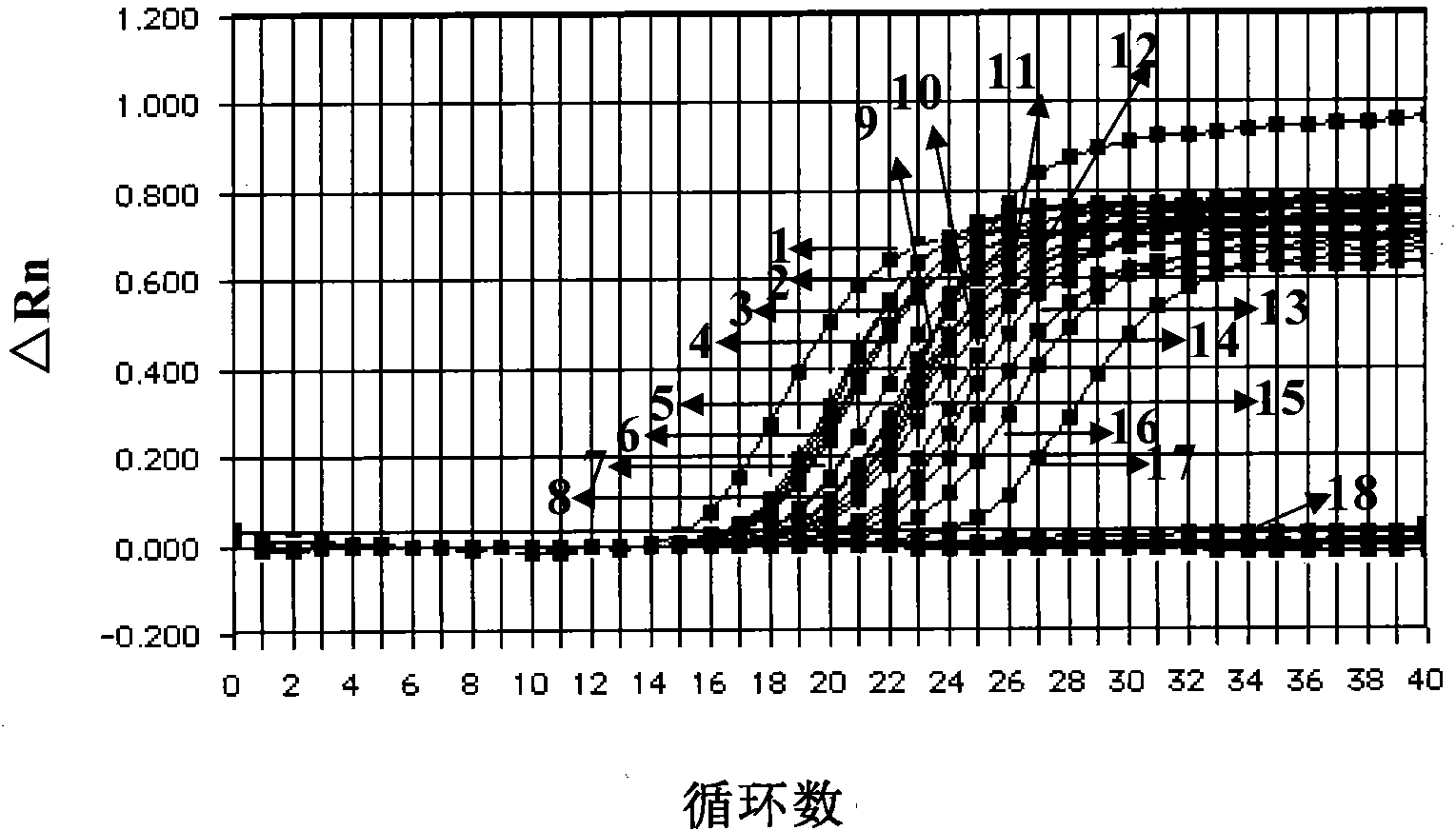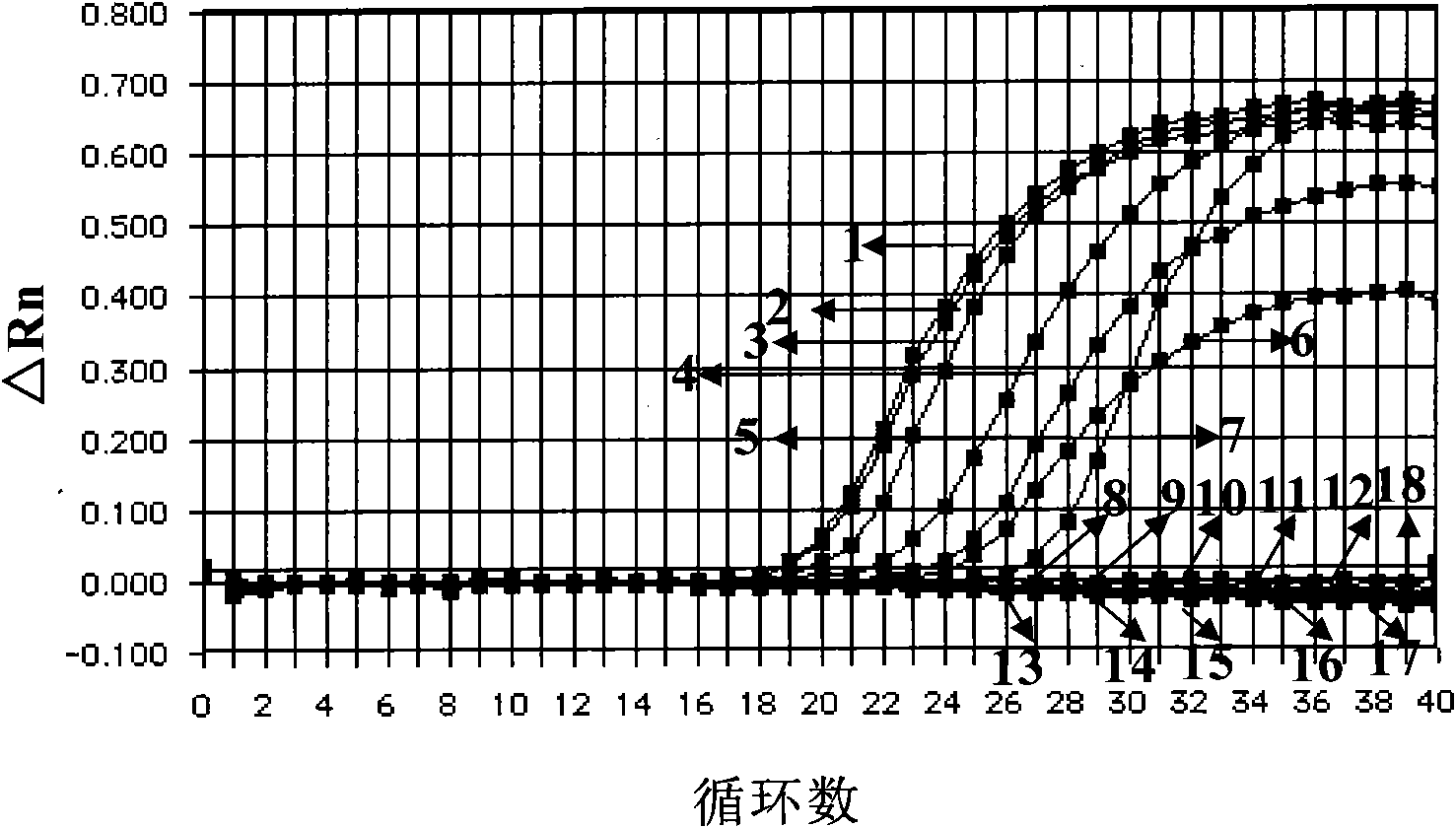Primer, probe, kit and method for real-time fluorescence PCR identification of shark's fin
A real-time fluorescence and kit technology, applied in the fields of biochemical equipment and methods, fluorescence/phosphorescence, and microbial determination/inspection, to achieve the effects of simple operation, avoidance of cross-contamination, and reliable results
- Summary
- Abstract
- Description
- Claims
- Application Information
AI Technical Summary
Problems solved by technology
Method used
Image
Examples
Embodiment 1
[0028] The inventors of the present invention cloned and sequenced the partial sequence of shark mitochondrial 16S rDNA by PCR for the first time.
[0029] This example is the partial sequence of shark mitochondrial 16S rDNA obtained by PCR cloning and sequencing.
[0030] According to the difference of mitochondrial 16S rDNA sequences in different sharks and teleosts, the upstream and downstream primers were designed to amplify star sharks. According to the instructions of Wizard Gel Extraction Kit (Promega, USA), the star shark PCR product was purified and recovered. According to the instructions of the TaKaRa pMD19-TVector kit (TaKaRa, Japan), the purified product was connected to pMD19-T Vector, the connection system was 10 μL, and the reaction components were: pMD19-T Vector 1 μL, PCR product 2 μL, ddH 2 O 2 μL, Solution I 5 μL, set positive and negative controls at the same time. Place the connection system at room temperature (22-37° C.) for 30 minutes and place it on...
Embodiment 2
[0036] In this embodiment, the extraction quality of the total DNA of a sample is tested by using a general primer pair and a probe for sharks and teleosts.
[0037] By detecting the mitochondrial 16S rDNA sequence, the extraction quality of the total DNA of the sample can be tested. Taqman fluorescent probe method: TaqMan technology is a technology for real-time fluorescent quantitative detection of single-tube PCR products. In an ordinary PCR amplification system, a dual fluorescent-labeled probe that is specifically complementary to the target gene sequence is added to utilize the fluorescent signal. Accumulate and monitor the entire PCR process in real time, and finally perform quantitative analysis on the unknown template through the standard curve. Quantitative steps: ① determine the CT value (C represents the cycle number (Cycle), T represents the fluorescence threshold value (Threshold), that is, the number of cycles experienced when the fluorescence signal in each rea...
Embodiment 3
[0066] In this example, the specificity and sensitivity of shark primer pairs and probes were verified through the following tests.
[0067] By detecting the mitochondrial 16S rDNA sequence, the specificity and detection sensitivity of shark primer and probe combinations can be determined. The reaction system is: Fast Start Universal PCR Master Mix 12.5 μL; probe (10 μM) 0.5 μL; upstream and downstream primers (10 μM) each 0.5 μL; template DNA 5 μL; add ddH 2 O to a total volume of 25 μL. The reaction program was 95°C for 10 min; 95°C for 15 s; 60°C for 1 min, 40 cycles.
[0068] The primers and probe sequences used to detect shark fins are:
[0069] The primer sequences are SEQ ID No.1 and SEQ ID No.2, the probe sequence is SEQ ID No.3, a fluorescent quenching group TAMRA is connected to the 3' end, and a fluorescent reporter group HEX is connected to the 5' end.
[0070] Using the combination of the primer pair and the probe of the present invention, compared with other p...
PUM
| Property | Measurement | Unit |
|---|---|---|
| Upstream primer | aaaaa | aaaaa |
Abstract
Description
Claims
Application Information
 Login to View More
Login to View More - Generate Ideas
- Intellectual Property
- Life Sciences
- Materials
- Tech Scout
- Unparalleled Data Quality
- Higher Quality Content
- 60% Fewer Hallucinations
Browse by: Latest US Patents, China's latest patents, Technical Efficacy Thesaurus, Application Domain, Technology Topic, Popular Technical Reports.
© 2025 PatSnap. All rights reserved.Legal|Privacy policy|Modern Slavery Act Transparency Statement|Sitemap|About US| Contact US: help@patsnap.com



